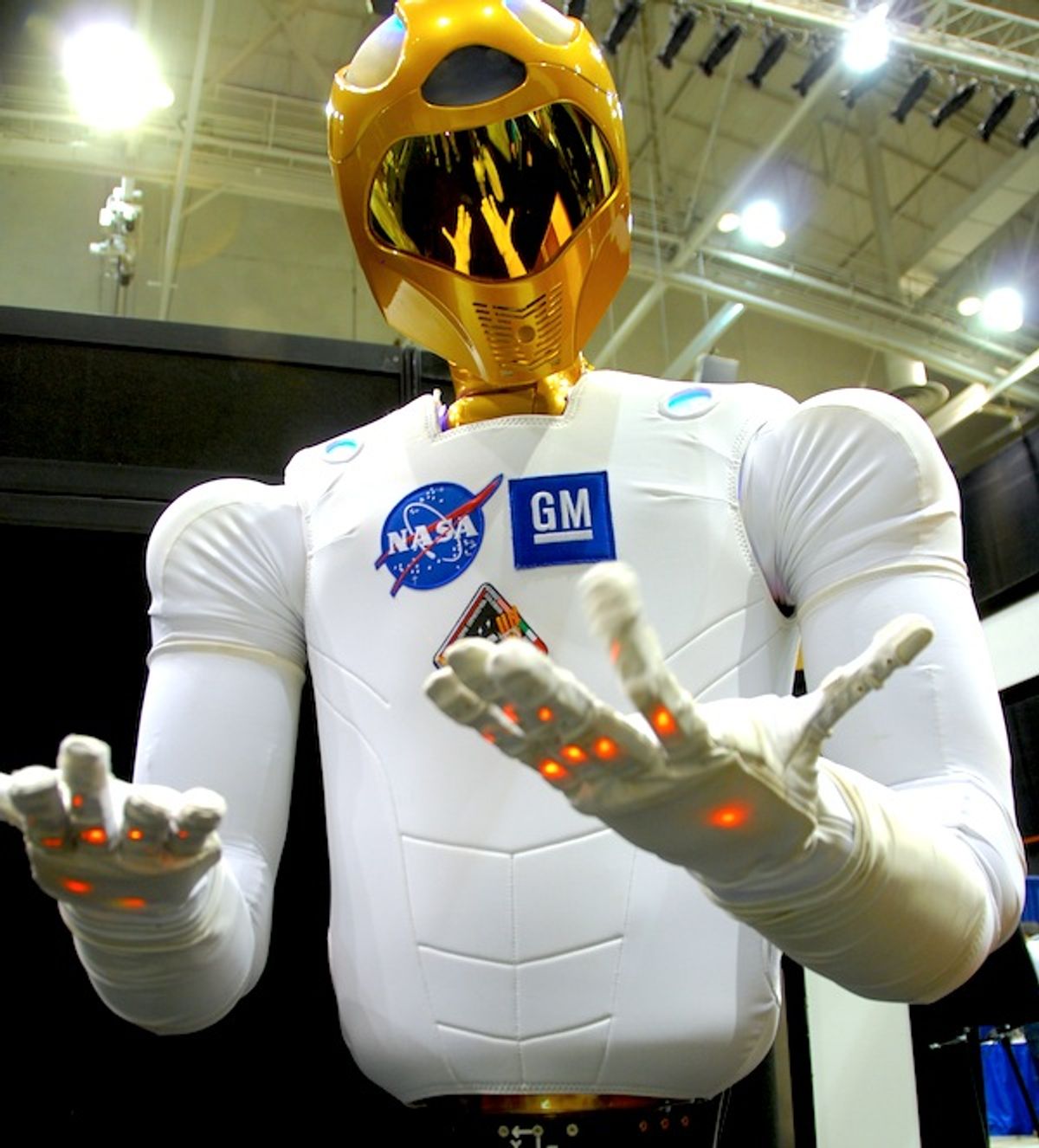Last year, we told you how Robonaut's dexterous hands rely on tendon-driven fingers to grasp objects much like our own hands do. Now we're going to show you how Robonaut's arms work. You probably noticed that the robot has a perfectly toned upper body with brawny biceps and six-pack abs. But if you're working alongside this burly bot (hello ISS crew!), fear not: Robonaut has fully compliant arms and even a built-in emergency shut-down mechanism. And as our video below shows, he's also one cool, fist-bumping robot.
Robonaut 2, designed jointly by NASA's Johnson Space Center and General Motors, is the second generation of the Robonaut series, and one unit is already on the International Space Station helping the crew. It's a good thing that NASA has clones of the robot, so us earthlings have a chance to see it too. Last week, several members of the Robonaut team, based in Houston, Texas, came to St. Paul, Minn., to attend the 2012 IEEE International Conference on Robotics and Automation and they brought along a Robonaut to demo at the show floor.
At the NASA JSC booth, we spoke to Ron Diftler, the Robonaut 2 project manager, who gave us some great details about the capabilities and safety features of the robot's arms. He explained that the robot uses an impedance controller, which can adjust the stiffness of the arms. This means the arms have limited torque and won't cause damage to objects—or the crew. "We went through very rigorous safety evaluations before we can send this robot to the space station," Diftler told us. "So that you would feel very comfortable shaking hands with it." In fact, we did shake hands with the robot—and we still have our fingers to type this story!
Robonaut 2's tendon-driven hand shown at ICRA 2012 in St. Paul, Minn.
Diftler also told us about some of Robonaut's jobs at the ISS. He said the robot is, among other things, assisting the crew with air flow measurements. Before they had the robot, the astronauts had to monitor air flow themselves. Now Robonaut just grabs an air flow meter and performs the measurements, not only collecting data more frequently than before but also freeing the crew from a boring task.
The idea is that Robonaut will increasingly take on other jobs, helping the crew with experiments and maintenance. For that, the Robonaut team designed the robot with varying levels of autonomy, Diftler said. In autonomous mode, the robot can perform tasks that require little or no supervision. For tasks that require a crew member to monitor or assist the robot, a "supervised autonomy" mode is used. Finally, there are more complex situations when remote operation is the best option, and in those cases an operator (aboard the ISS or on Earth) can use teleoperation gear to fully control the robot.
And if you're still worried that Robonaut will pull a HAL and turn against the crew, know that Robonaut has a built-in emergency stop mechanism: just give one of its arms a good nudge and the robot will shut down. At least that's the hope.
Photos: Evan Ackerman. Video: Erico Guizzo & Evan Ackerman/IEEE Spectrum
UPDATED 9:30 p.m.
Erico Guizzo is the Director of Digital Innovation at IEEE Spectrum, and cofounder of the IEEE Robots Guide, an award-winning interactive site about robotics. He oversees the operation, integration, and new feature development for all digital properties and platforms, including the Spectrum website, newsletters, CMS, editorial workflow systems, and analytics and AI tools. An IEEE Member, he is an electrical engineer by training and has a master’s degree in science writing from MIT.
Evan Ackerman is a senior editor at IEEE Spectrum. Since 2007, he has written over 6,000 articles on robotics and technology. He has a degree in Martian geology and is excellent at playing bagpipes.





